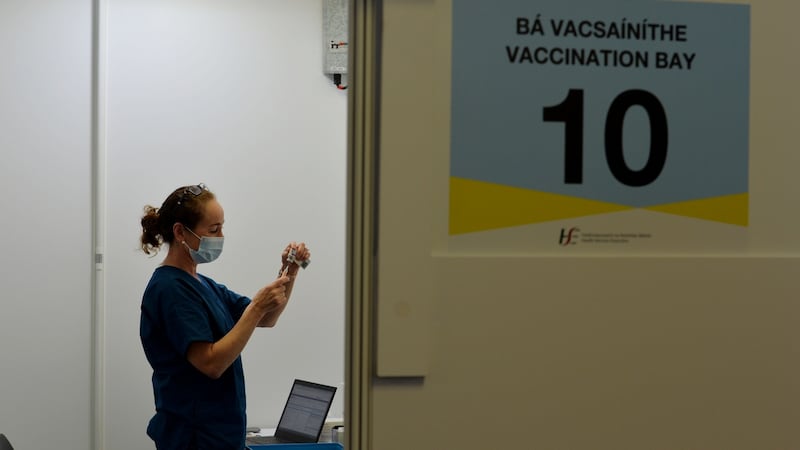The Government experienced a very mixed reception to the recent change in the Covid-19 vaccination programme. The decision had a compelling rationale, to prioritise those with greatest risk of severe Covid-19. There is a now a strong case for additional changes to accelerate and maximise benefit.
A single dose of any available vaccine offers very substantial probability of protection, in the range of 60-85 per cent depending mainly on which vaccine is used. A second dose adds only 0-15 per cent to this. The cost of that second dose, offering at most 15 per cent additional protection to person A, means that unvaccinated person B is deprived of at least a 60 per cent chance of protection for some time.

Individuals may have to wait up to twice as long for any vaccine if we continue to prioritise early second doses. Herd immunity effects will also likely be delayed. There are exceptions where prioritising a second dose is the right thing to do. For example, elderly care home residents have such high risk of severe Covid-19 that reducing this by a further 10 per cent is a greater benefit than reducing the risk of a younger healthy person by even 85 per cent. This is what we largely implemented in the first months of the vaccination programme.
The problem stems from the licensing process by which marketing authorisations are granted to manufacturers by regulators. Licensing is critically important but on its own wholly inadequate as a guide to implementing a vaccination programme. This is true generally, and particularly when supplies are limited.
Marketing authorisations
The regulator’s role is to assess evidence that a treatment offers greater benefit than risk to those for whom it is licensed. Regulators are constrained to authorise marketing based on the ways that treatment was used in the studies reviewed when granting the licence. These marketing authorisations can be altered to amend indications as evidence emerges, but this is relatively slow – other than in situations such as identified safety concerns.
While supply stays constrained, first doses should largely be prioritised over second
Sadly, the excellent trials did not test vaccines in the way that we should now use them. Designed when nobody knew whether vaccines would work, almost all used two doses in rapid succession, a chance for the immune system to learn, and have some revision, before facing the virus. As trials report and evidence accumulates from monitored vaccine rollout we find that vaccines are stunningly effective, even after one dose.

Johnson and Johnson developed the same type of vaccine as Astra Zeneca. Their trial was later and used a single dose in line with evidence emerging for other vaccines that one dose works. It offered 67 per cent protection and is appropriately authorised for single-dose use. Even though not based on a formal trial we now know that one dose of Moderna or Pfizer vaccines offers higher than 67 per cent protection, yet by following the terms of the licence we use up an additional dose with little added short-term benefit.
In using evidence to make decisions we must balance what we know and how well we know it. The original trials are still the best quality of study available. We are most certain of the short-term effects of two rapid doses rather than one for most vaccines. But evidence on the effectiveness of single doses for all available vaccines has crossed the threshold where it needs to be considered and programmes changed. While supply stays constrained, first doses should largely be prioritised over second. The faster rollout will, as a side effect, bring forward the vaccination of many members of occupational groups delayed by recent changes.
Safe and beneficial
A second dose will be important to prolong protection, even for the Johnson and Johnson vaccine. The best timing is uncertain, but a second dose to prolong immunity, rather than establish it, is generally more effective following a longer gap. For the Astra Zeneca vaccine, there is evidence that it is safe and beneficial to wait at least 12 weeks, perhaps much longer but evidence for this is not available yet. Given better initial protection from Pfizer and Moderna vaccines, a shorter duration of protection is unlikely but without direct evidence for this yet. We don’t need certainty now. If protection declines this will become clear as illness returns to this group and the programme can reprioritise.
We should treat the population in front of us and adapt policy to maximise population benefit
Drug marketing authorisation indications should be followed unless there is a reason to deviate from these. Off-licence use puts more responsibility on the prescriber. Doctors must be able to defend their decision to use a treatment outside the marketing authorisation. But doctors do this when it is best for the patient in front of them.
The same should apply to treating populations, especially in a pandemic. We should treat the population in front of us and adapt policy to maximise population benefit. France and Quebec recommend that those with past Covid-19 infection have one dose of vaccine based on strong and consistent evidence that natural infection plus one vaccination produces a stronger immune response than two vaccinations. The UK has been relatively flexible in Covid-19 vaccine intervals to optimise breadth of protection.

In past cholera and yellow fever outbreaks in Africa, shortages of vaccines led to reduced numbers of doses and lower-concentration individual doses respectively to best protect the population with available vaccine. We are not used to having such absolute constraints on our healthcare resources in Europe, but at present we do. We should learn from Africa, and even the UK, and adapt to use available resources to protect the population as quickly as possible.










